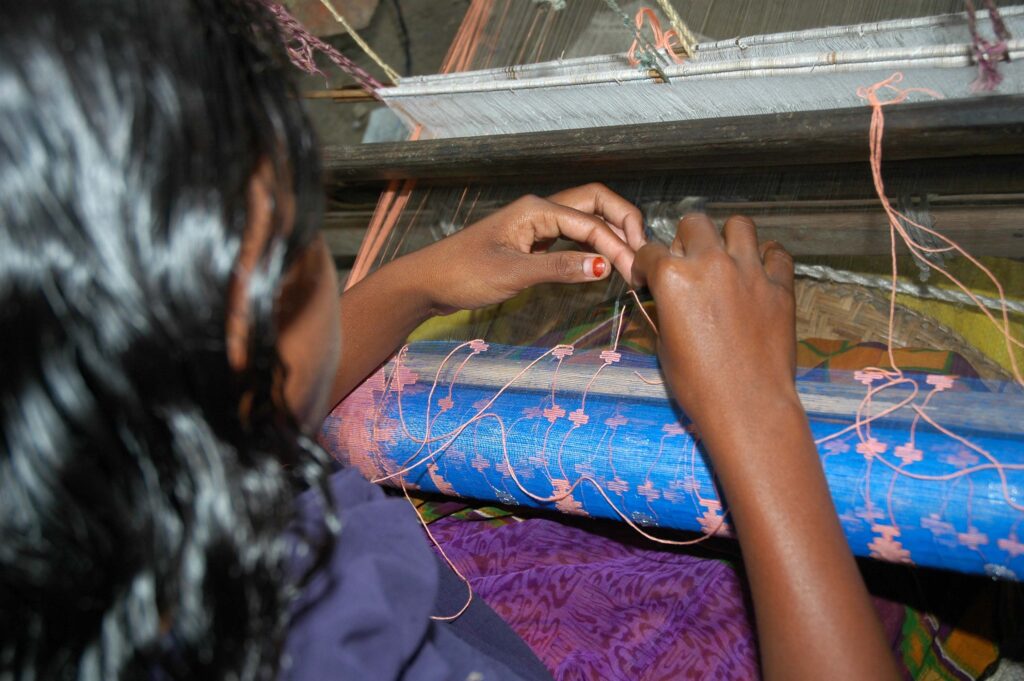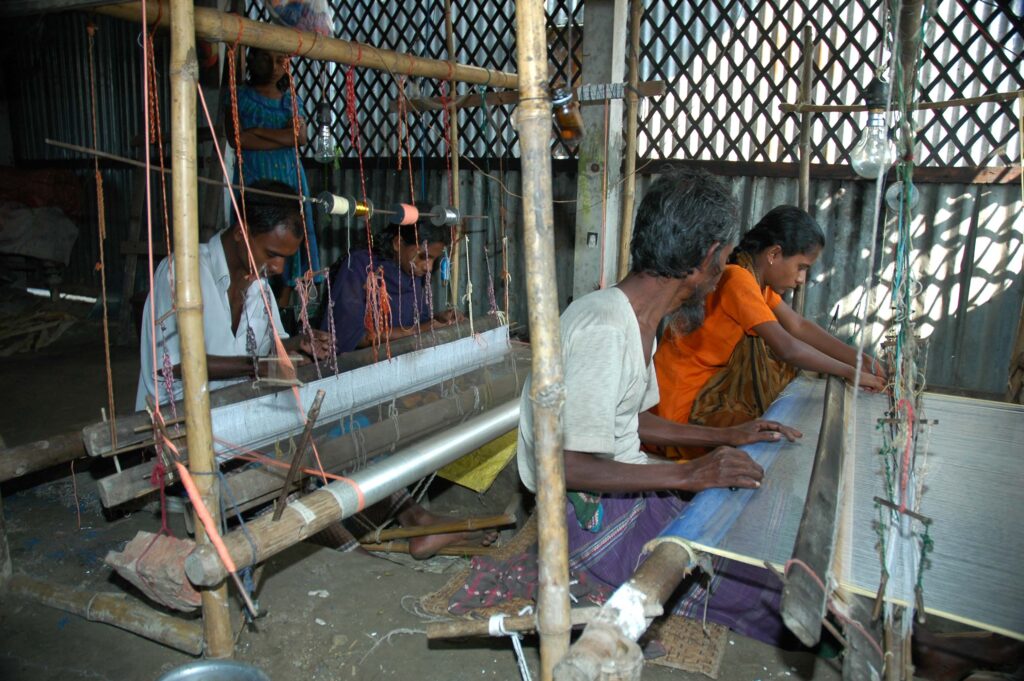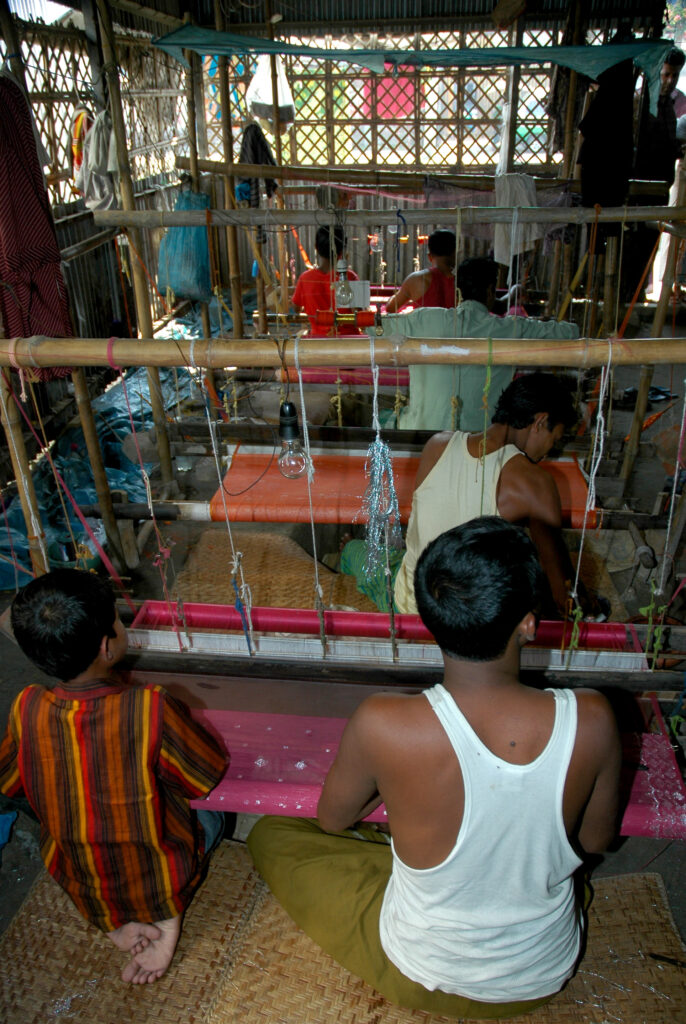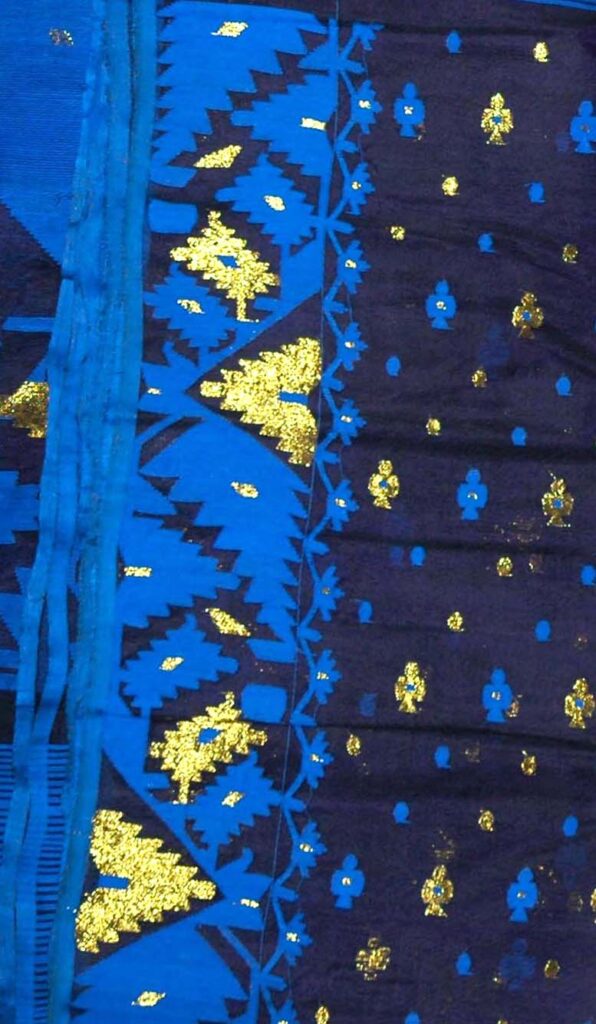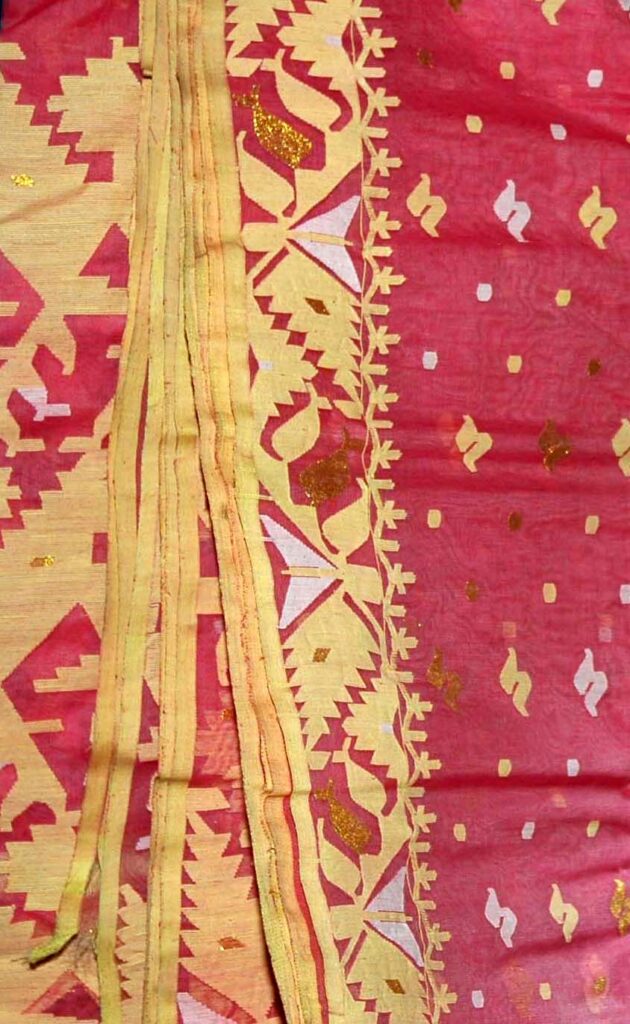Jamdani Palli in Rupganj
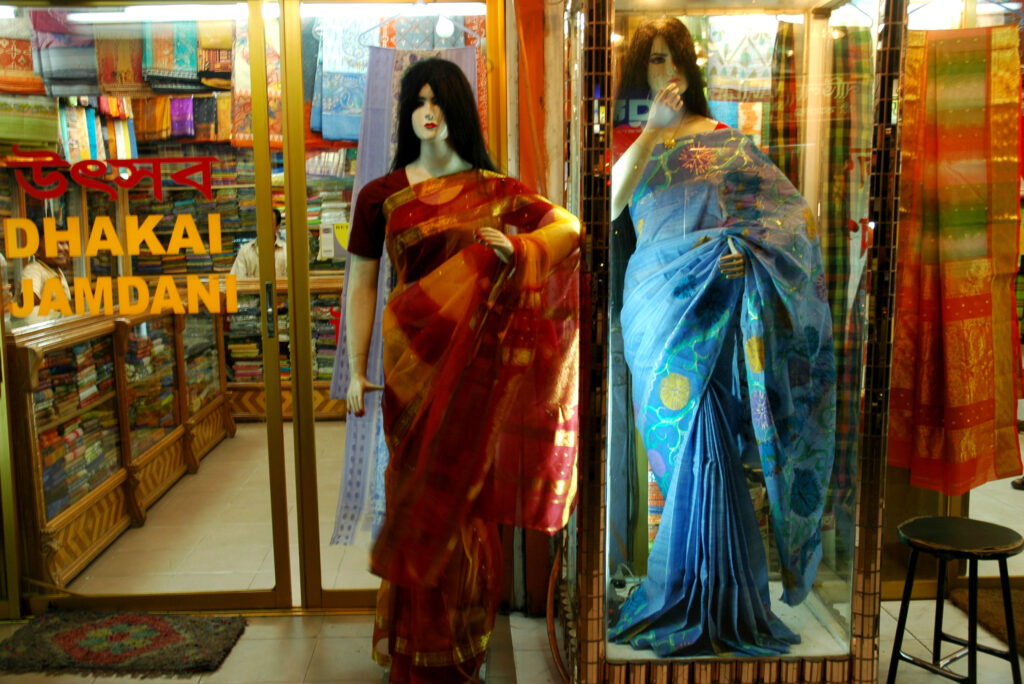
Jamdani is a fine cloth with geometric or floral designs. Jamdani usually means saree, but there are Jamdani scarves, kurtas, turbans, skirts, handkerchiefs, screens and tablecloths as well. In Dhaka, the art of making Jamdani designs on fine fabric reached its highest achievements during the Mughal period.
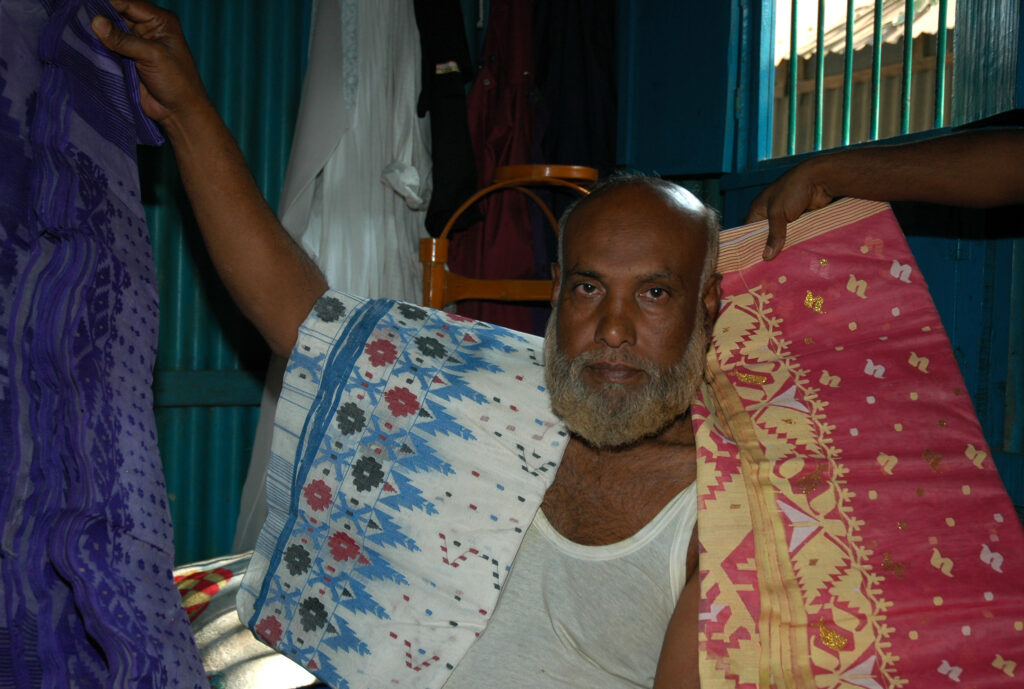
There were handlooms in almost all villages of Dhaka district. Dhaka, Sonargaon, Dhamrai, Titabari, Jangalbari and Bajitpur were famous for making high-quality Jamdani.
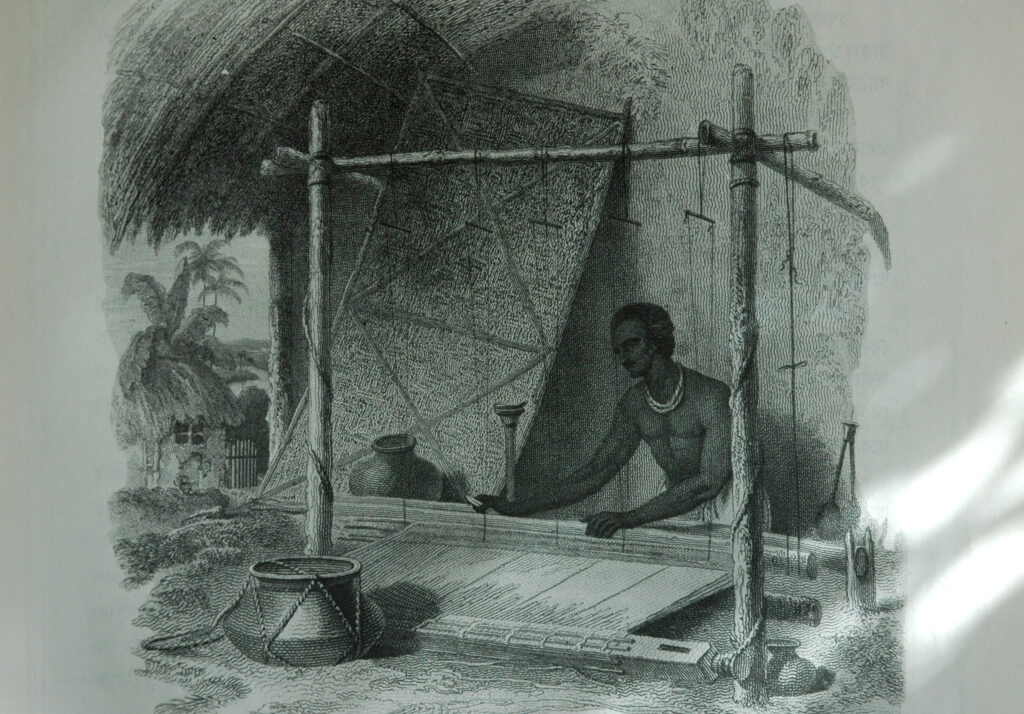
Traders from Europe, Iran, Armenia and other places came to Dhaka to buy these fabrics. The Mughal Emperor, the Nawab of Bengal and other aristocrats used to engage agents in Dhaka to buy high-quality Jamdani for them.
There are a variety of Jamdani designs and expert weavers do not need to draw first on paper. Jamdani saris have different names according to their design. For example, a Jamdani with small flowers on the fabric is known as Butidar. If these flowers are arranged in a reclined position it is called Tersa Jamdani. These designs do not need to be made of flowers only. There can be designs with peacocks and leaves of creepers. If such designs cover the entire field of the saree it is called Jalar Naksha. Jamdani sarees are much sought after by fashion-conscious working women for their elegance. Bengal is a large hub of Jamdani saree suppliers and different kinds of Jamdani sarees are manufactured and Dhakai Jamdani is one of them. Dhakai Jamdani sarees are distinguished from others by its very fine texture resembling muslin and the elaborate and ornate workmanship.
Rupganj Jamdani Village is a cluster of small scale family based factories weaving beautiful saris. Most of the owners of the factories and weavers are following a long family tradition of Jamdani manufacturing. It takes about one year’s training to learn how to weave quality Jamdani sarees and factory owners rarely give full responsibility for saree weaving to trainees before completing the 12 months training. It takes about one week to produce a basic design, although a more exquisite design could take many months and the price also varies accordingly. Jamdani is a saree for the special occasion.

